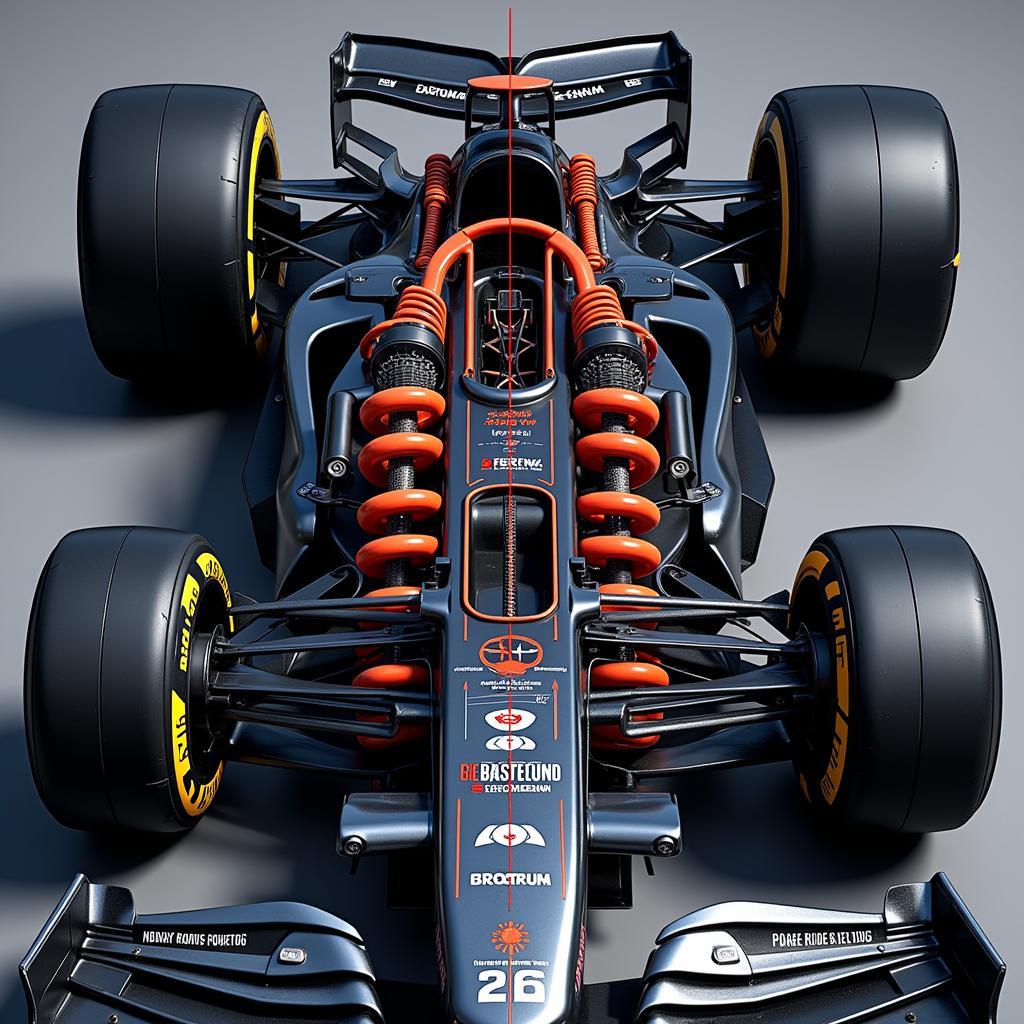F1 22 Spain Setup: Mastering the Circuit de Barcelona-Catalunya
October 29, 2024F1 22 Spain Setup is crucial for a competitive race at the Circuit de Barcelona-Catalunya. This technically demanding track requires a delicate balance of downforce and straight-line speed, making finding the optimal setup a challenge. This guide will delve into the intricacies of creating a winning F1 22 Spain setup, covering key aspects like aerodynamics, suspension, brakes, and tire management. We’ll explore how to maximize performance in each sector, from the high-speed corners to the crucial final chicane.
Aerodynamics: Finding the Sweet Spot for F1 22 Spain
Aerodynamic balance is paramount at the Circuit de Barcelona-Catalunya. Too much downforce hinders straight-line speed, while too little compromises cornering grip. The key is finding the sweet spot that allows you to maintain speed through the high-speed turns while still being able to overtake on the straights. Generally, a medium-downforce setup is recommended, allowing for good stability through the faster corners like Turn 3 and Turn 9, while still maintaining decent speed down the main straight. Experimenting with front and rear wing angles within a few clicks of each other can help you fine-tune the balance for your driving style.
A common mistake is running excessive wing angles. While this might feel more planted in slower corners, it significantly reduces top speed, making you a sitting duck on the straights.
Suspension Setup: Balancing Stability and Responsiveness for your F1 22 Spain Setup
Suspension setup significantly impacts the car’s behavior through the diverse corners of Barcelona. A stiffer setup provides stability in high-speed sections but can make the car feel nervous and unpredictable over kerbs. Conversely, a softer setup improves traction and ride over kerbs but can compromise stability in faster corners. A balanced approach is key, with slightly stiffer front suspension to maintain stability during braking and turn-in, and a slightly softer rear to improve traction on corner exit.
Fine-tuning the anti-roll bars is equally important. Stiffer anti-roll bars reduce body roll, improving responsiveness, but can make the car lose traction over bumps and kerbs. Start with a balanced setting and make small adjustments based on your driving style and the car’s behavior.
 F1 22 Spain Suspension Setup
F1 22 Spain Suspension Setup
Brakes and Tires: Maximizing Performance in Barcelona
Braking performance is vital, particularly for the heavy braking zones at Turn 1 and Turn 10. A higher brake bias towards the front helps with initial turn-in, but can lock up the front tires under heavy braking. Experiment to find a balance that allows for late braking without sacrificing stability. Tire management is also crucial. The abrasive surface of the Circuit de Barcelona-Catalunya puts a lot of stress on the tires, so managing their temperatures and wear is essential for a strong race pace. Smoother inputs on the steering wheel and throttle can significantly extend tire life.
“Consistent braking is key in Barcelona,” says renowned F1 engineer, Antonio Martinez. “Finding the right brake bias and managing tire temperatures are crucial for maintaining performance throughout the race.”
Putting it all Together: A Winning F1 22 Spain Setup
Ultimately, the best F1 22 Spain setup is the one that suits your driving style. Start with a baseline setup and make incremental adjustments based on your feedback and lap times. Focus on finding a balance between downforce and straight-line speed, stability and responsiveness, and braking performance and tire management.
 F1 22 Complete Spain Setup Guide
F1 22 Complete Spain Setup Guide
“Remember,” advises Martinez, “a good setup is not a one-size-fits-all solution. It’s a process of continuous refinement and adaptation.”
In conclusion, mastering the F1 22 Spain setup requires a deep understanding of the track’s characteristics and the interplay between different setup parameters. By focusing on aerodynamic balance, suspension tuning, brake bias, and tire management, you can unlock the full potential of your car and achieve a competitive edge at the Circuit de Barcelona-Catalunya.
FAQ
-
What is the recommended downforce level for the F1 22 Spain setup?
A medium-downforce setup is generally recommended. -
How can I improve traction on corner exit?
Softening the rear suspension can help improve traction on corner exit. -
What is the importance of brake bias in Barcelona?
A balanced brake bias is essential for late braking without locking up the front tires. -
How can I manage tire wear at the Circuit de Barcelona-Catalunya?
Smooth inputs on steering and throttle can significantly extend tire life. -
What’s the best way to find my optimal setup?
Start with a baseline setup and make incremental adjustments based on your feedback and lap times. -
What is the ideal ride height for this track?
Experiment to find what works best, but generally a lower ride height is favored. -
How can I improve stability in high-speed corners?
Slightly stiffer front suspension and anti-roll bars can improve high-speed stability.
You might also be interested in these articles on our website: “F1 22 Monaco Setup Guide”, “Understanding Tire Management in F1 22”, and “Advanced Aerodynamics Explained”.
For support, contact us at Phone Number: 0915117113, Email: [email protected], or visit us at: Hamlet 3, Binh An Quarter, Phu Thuong, Binh Phuoc 830000, Vietnam. We have a 24/7 customer service team.